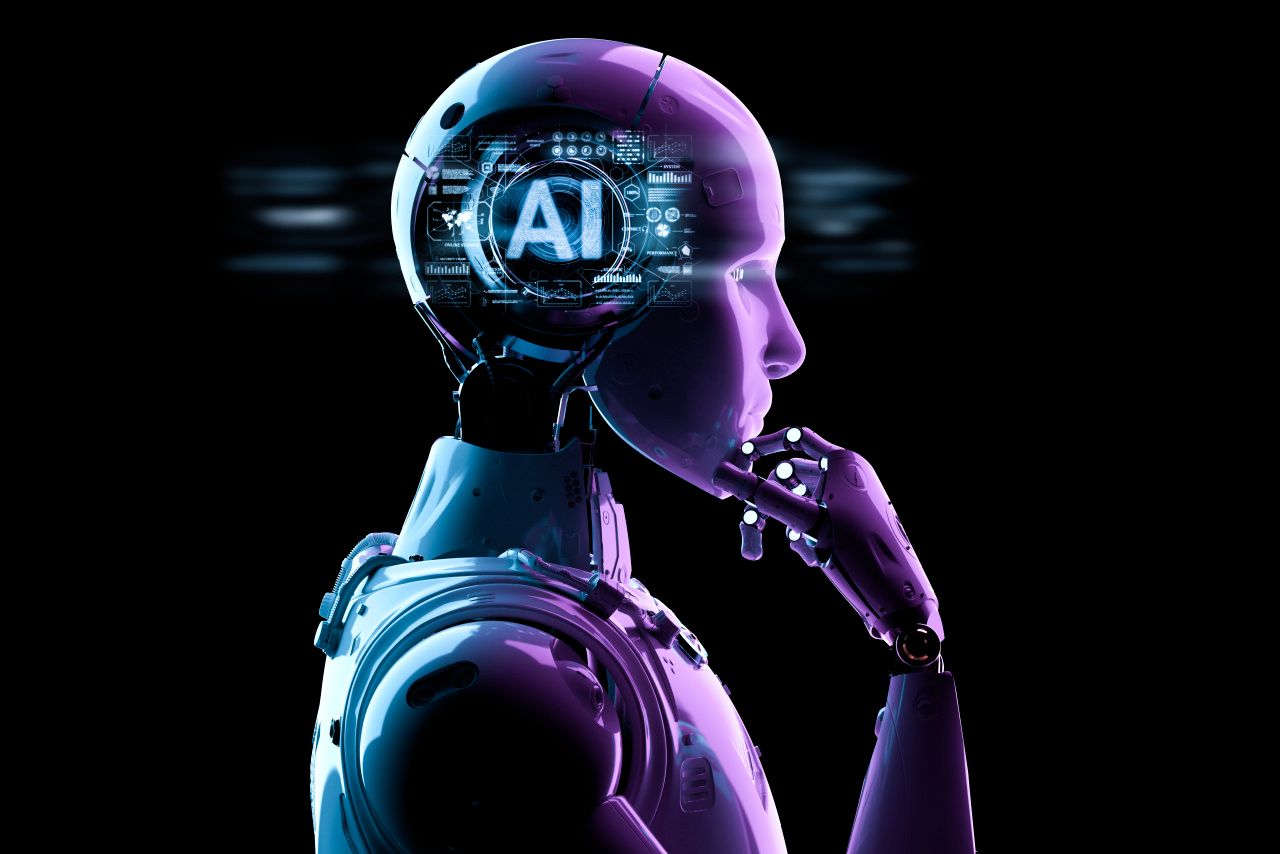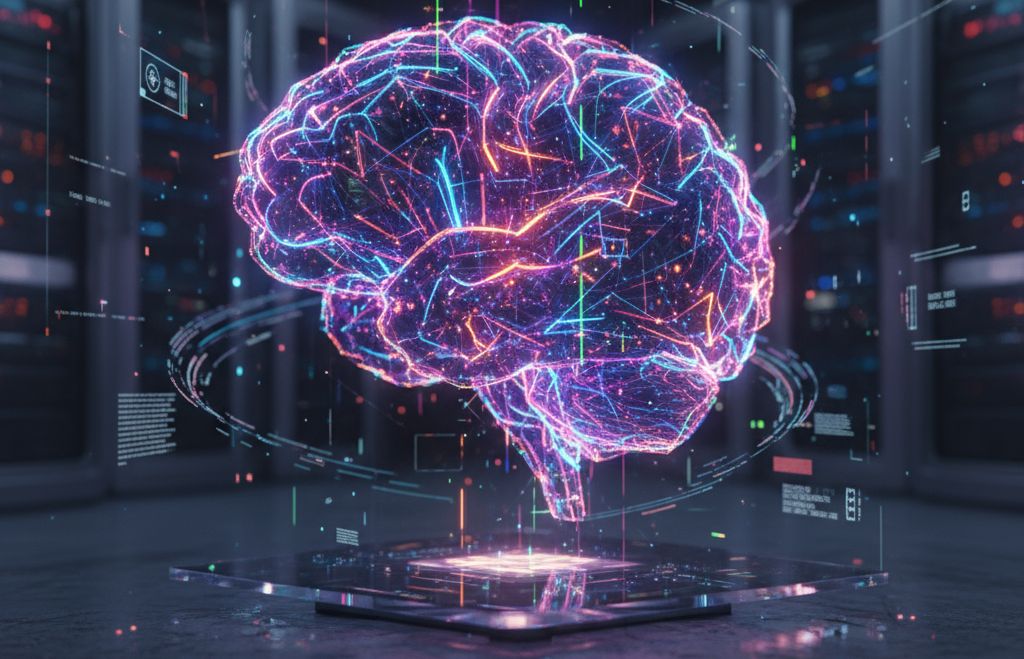The artificial intelligence revolution isn't coming—it's already here, and 2025 is proving to be the most explosive year yet. From AI agents that think and act independently to models that reason like PhD scientists, the technology landscape is being rewritten at breakneck speed. If you thought generative AI was impressive, buckle up—what's happening now will fundamentally change how we work, innovate, and solve humanity's biggest challenges.
The Rise of Agentic AI: Your New Digital Workforce
Forget chatbots that simply answer questions. Agentic AI is the game-changer dominating 2025, and it's transforming businesses from the ground up. These aren't passive tools—they're autonomous systems that can plan, execute, and achieve complex objectives with minimal human oversight.
The numbers tell an incredible story: 96% of enterprises plan to expand their AI agent usage in the next 12 months, with half aiming for organization-wide deployment. Over 70% of AI adoption efforts now focus on action-based agents rather than conversational AI. This isn't experimentation anymore—it's full-scale transformation.

What makes agentic AI so powerful? These systems combine large language models with traditional programming to create a four-step workflow: they receive tasks, plan approaches, execute actions using available tools, and continuously learn from results. Microsoft's sales teams using AI agents saw a 9.4% revenue boost per seller and closed 20% more deals. That's real money, real results.
Real-World Agentic AI in Action
The applications are mind-blowing. Amazon's AI agents now autonomously handle customer inquiries, summarize reviews, and guide purchasing decisions without human intervention. DHL's logistics system independently adjusts delivery schedules based on real-time traffic, weather patterns, and demand fluctuations.
In finance, platforms like Wealthfront deploy AI agents that monitor markets 24/7 and make real-time investment adjustments. Cybersecurity firms like Darktrace and CrowdStrike use autonomous agents to detect threats, analyze patterns, and block malicious activity before it spreads—all in milliseconds.
The adoption patterns reveal fascinating priorities: enterprises focus 46% of AI agent deployment on business operations like procurement, HR, and finance. Mid-market companies prioritize customer-facing automation (39% on core functions, 18% on sales). Meanwhile, SMBs go all-in on growth, with over 65% of their AI agent adoption targeting sales and marketing.
Reasoning Models: AI That Actually Thinks
Perhaps the most significant breakthrough of 2025 is the emergence of reasoning models that don't just generate text—they actually think through problems step-by-step.
OpenAI's o1 model represents a paradigm shift. Instead of immediately spitting out answers, it spends time reasoning through complex problems, generating internal "chains of thought" before responding. The results? On the American Invitational Mathematics Examination, o1 solved 83% of problems compared to just 13% for GPT-4o. It performs at a PhD level on benchmark tests in physics, chemistry, and biology.
What's remarkable is that this capability wasn't explicitly programmed—self-correction and backtracking emerged naturally as a consequence of increased inference-time computing. The model uses a sophisticated training system called "Berry Training," creating hundreds of trillions of tokens representing diverse reasoning paths.
Anthropic countered with Claude 3.7 Sonnet, released in February 2025—the first hybrid reasoning model. Unlike competitors that separate quick responses from deep thinking, Claude 3.7 lets users toggle between standard and extended thinking modes. In standard mode, it's an upgraded version of Claude 3.5 Sonnet. Switch to extended thinking, and it employs self-reflection to achieve significantly improved results.
Google's not sitting idle. Gemini 2.5 Deep Think achieved gold-medal performance at the 2025 International Collegiate Programming Contest, solving problems that stumped every university team. The Gemini 2.5 Computer Use model can now interact with user interfaces—clicking, typing, and scrolling through applications like a human.
This isn't about artificial general intelligence—it's about LLMs that simulate human-like thought processes in constrained, high-impact contexts. And it's transforming industries from medicine to materials science.
Multimodal AI: When AI Sees, Hears, and Understands Everything
2025 marks the mainstream arrival of multimodal AI—systems that seamlessly process text, images, audio, and video simultaneously. This isn't incremental improvement; it's a fundamental shift in how machines understand the world.
The multimodal AI market is growing 35% annually to reach $4.5 billion by 2028. Why? Because these models provide context-rich responses by blending multiple data types. A medical multimodal AI can review a CT scan, analyze doctor's notes, and listen to patient symptoms before offering diagnostic suggestions. Customer support agents can see screenshots, read emails, and listen to calls simultaneously for faster, more accurate resolutions.
GPT-4o, Gemini 2.5 Flash & Pro, and Claude 3.7 lead the 2025 multimodal race. These models demonstrate context-rich understanding, real-time context switching (moving from voice to image to text analysis), and lightweight versions optimized for mobile and edge devices.
Key emerging trends include agentic AI with multimodal reasoning—systems that combine video feeds, spoken instructions, and written prompts to achieve complex objectives autonomously. Multimodal search engines now combine user behavior, voice queries, and visual cues for hyper-personalized results.
Healthcare Revolution: AI Saving Lives Right Now
AI's impact on healthcare in 2025 is nothing short of revolutionary. These aren't future promises—they're saving lives today.
AI-powered echocardiography is automating labor-intensive cardiovascular assessments, detecting subtle disease markers earlier than traditional imaging, and uncovering new disease subtypes that guide precision treatments. Harvard's School of Public Health projects AI integration could reduce treatment costs by up to 50% while enhancing health outcomes by 40%.
One breakthrough story: a legally blind woman, Patrícia Gonçalves, regained better-than-20/20 vision through AI-assisted Lasik surgery. The AI analyzed a digital model of her eyes to create a highly precise, customized treatment plan. She now sees 20/16—a testament to AI revolutionizing surgical precision.
Drug discovery is accelerating dramatically. Traditional development takes decades and costs $1.3 billion per drug, with only 10% reaching market. AI slashes this timeline by analyzing vast molecular datasets, predicting drug interactions, and identifying promising compounds faster than any human team could.
A transformer-based AI model named Delphi-2M can now predict the progression of 1,256 diseases over decades using past medical history, lifestyle factors, and biomarkers. It estimates not just whether conditions may occur, but when—revolutionizing preventive medicine and healthcare planning.
Predictive analytics enable healthcare providers to forecast hospital readmissions, identify high-risk patients for chronic diseases, and intervene early. Remote monitoring combined with AI-powered virtual health assistants provides continuous patient care while reducing hospital burdens.
Small Language Models: The Efficiency Revolution
While headlines focus on massive models, 2025 is witnessing the rise of Small Language Models (SLMs)—and they're changing everything about AI deployment.
SLMs pack 1 million to 10 billion parameters (compared to hundreds of billions in LLMs) but deliver impressive performance on focused tasks. The advantages? Training an SLM can be up to 1,000 times less expensive than LLMs. They consume far less energy, run efficiently on devices with limited processing power, and boast quicker inference speeds for real-time applications.
Here's the kicker: carefully trained SLMs can match or outperform larger models on specific tasks. A 2023 MIT and IBM study found a 1.3 billion parameter model outperformed GPT-3 (175 billion parameters) on certain benchmarks. Microsoft's Phi models demonstrated that curating high-quality data dramatically improves model performance and reasoning.
SLMs are perfect for on-device AI applications—smartphones, embedded systems, IoT devices—where cloud connectivity isn't guaranteed or desirable. They're ideal for resource-constrained environments requiring fast, offline inferencing. Over 30% of smartphone shipments now include built-in AI capabilities, and laptops with local AI processing are projected to reach 50% in 2025, up from 30% in 2024.
Edge AI: Intelligence at the Source
Edge AI is moving intelligence from distant cloud servers to local devices—and 2025 is its breakthrough year. Analysts predict 50% of enterprises will adopt edge computing by 2029, up from 20% in 2024.
Edge AI processes data directly on devices like cameras, smartphones, wearables, and industrial sensors. This enables real-time decision-making without cloud dependency, critical for autonomous vehicles, patient monitoring systems, and industrial automation.
The benefits are compelling: ultra-low latency (no round-trip to cloud servers), enhanced privacy (sensitive data stays on-device), reduced bandwidth usage (less data transmitted over networks), offline capability (functions without internet), and energy efficiency (local processing often consumes less power than continuous cloud communication).
Hardware is catching up to the vision. NVIDIA Jetson AGX Orin delivers up to 275 TOPS (trillions of operations per second) of AI performance in an edge module—enough for autonomous robots, drones, and advanced computer vision. Edge AI is now most visible in critical-asset-intensive industries with highly distributed operations: manufacturing (predictive maintenance, quality control), retail (smart shelves, automated checkout), healthcare (remote patient monitoring), and smart cities (traffic optimization, surveillance).
The AI Regulation Landscape: EU Takes the Lead
2025 is the year AI regulation becomes real. The EU AI Act—the world's first comprehensive AI law—is being implemented in phases.
February 2, 2025 saw the first wave: unacceptable-risk AI systems (social scoring, biometric categorization, emotion recognition for manipulation) were banned. Organizations must ensure adequate AI literacy among employees.
August 2, 2025 brought critical changes for General Purpose AI (GPAI) models like ChatGPT and Midjourney. Providers must now maintain up-to-date documentation, develop copyright compliance strategies, and publish summaries of training content. High-risk AI systems—including those making personnel-related decisions—face extra obligations.
August 2, 2026 brings comprehensive compliance: conformity assessments by notified bodies, system registration, strict documentation requirements, and reporting obligations. Companies using AI in application processes must now label AI-generated content clearly and cannot use applicant data for training without explicit permission or complete anonymization.
The EU AI Act categorizes systems into four risk levels: unacceptable (banned), high-risk (strict requirements), limited-risk (transparency obligations), and minimal-risk (no special obligations). The framework aims to make AI safer, keep it under human control, protect data privacy, and ensure transparency.
AI's Sustainability Challenge: The Energy Question
AI's explosive growth comes with a massive environmental footprint. Data centers consumed 4.4% of U.S. electricity in 2023—a number that could triple by 2028. Training GPT-3 alone consumed 1,287 megawatt hours (enough to power 120 average U.S. homes for a year), generating 552 tons of CO₂.
Each ChatGPT query consumes about five times more electricity than a simple web search. The rapid fluctuations in energy use during AI training require diesel-based backup generators to protect power grids. Manufacturing AI chips requires rare earth mineral extraction, contributing to resource depletion and environmental degradation.
But there's hope. PwC modeling suggests that if AI improves energy efficiency across the economy at one-tenth its adoption rate, it could compensate for its own energy consumption—making AI's overall effect on energy and emissions potentially neutral. AI already enables sustainability solutions: predicting room temperatures and pre-cooling buildings, optimizing aircraft and cargo ship routes, and refining cement composition and manufacturing processes.
Strategies for sustainable AI include optimizing models to use fewer resources, developing domain-specific models customized for particular fields, transitioning data centers to renewable energy, and deploying AI-specific accelerators like neuromorphic chips and optical processors. SLMs and edge AI reduce cloud dependency, cutting energy consumption significantly.
Synthetic Data: Solving AI's Data Crisis
As AI scales, synthetic data is becoming essential to training. Gartner forecasts that by 2030, synthetic data will be more widely used for AI training than real-world datasets.
Why? Synthetic data solves three critical challenges: data scarcity (generating data for rare scenarios), privacy compliance (creating data without personal information), and bias reduction (generating balanced datasets). It's dramatically more cost-effective than collecting, cleaning, and labeling real-world data.
NVIDIA and Databricks have built scalable synthetic data pipelines powering perception AI across industries. NVIDIA's Cosmos and Isaac GR00T highlight how simulation-driven training is becoming essential for robotics and physical AI. Building autonomous systems requires vast amounts of high-quality data that's challenging or expensive to acquire—synthetic data provides a scalable alternative.
Advanced models like GANs (Generative Adversarial Networks), VAEs (Variational Autoencoders), diffusion models, and transformers create synthetic data tailored for specific applications. Industries leveraging synthetic data include healthcare (rare disease datasets), finance (fraud detection scenarios), autonomous vehicles (edge case driving situations), and customer support (diverse query examples).
The key? Don't rely solely on synthetic data. Implement strong Human-in-the-Loop (HITL) review processes to validate quality and relevance, ensuring ground truth integrity.
The Bottom Line: AI is Accelerating, Not Slowing
The AI trends of 2025 aren't isolated developments—they're interconnected waves reshaping our technological landscape. Agentic AI handles tasks once requiring teams of humans. Reasoning models solve problems at expert human levels. Multimodal systems understand the world as we do—through multiple senses simultaneously. Healthcare AI is diagnosing diseases earlier and more accurately. SLMs and edge AI are democratizing access while reducing environmental impact.
83% of organizations believe investing in AI agents is critical to maintaining competitive edge. The window for adoption is now—many companies are moving from experimentation to execution. Those who act decisively will lead their industries. Those who hesitate risk irrelevance.
The AI revolution of 2025 isn't about replacing humans—it's about augmenting human capabilities at unprecedented scale. From the enterprise deploying autonomous agents across operations to the doctor using AI for early disease detection to the developer building on-device intelligence, AI is becoming the foundation of competitive advantage.
The future isn't coming. It's here. And it's accelerating faster than anyone predicted.
What AI trend excites you most? Drop your thoughts in the comments below!



